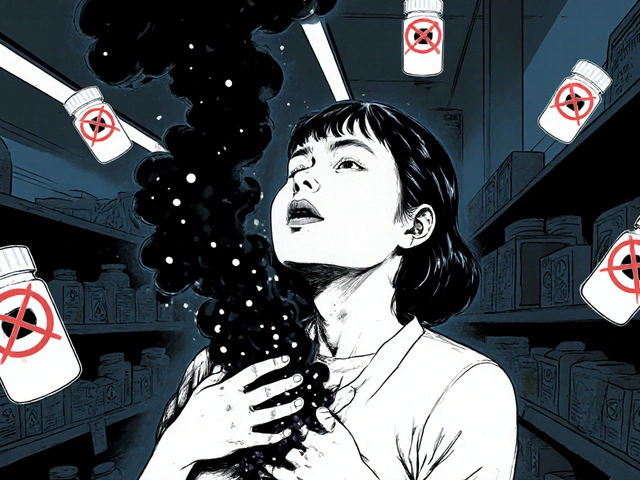Nolvadex Alternatives: What Works When You Need a Different Breast Cancer Drug
If you’ve heard of Nolvadex (tamoxifen) but wonder about other choices, you’re not alone. Many patients switch meds because of side effects, drug interactions, or specific cancer types. Below we break down the most common alternatives, why doctors prescribe them, and what to expect.
Aromatase Inhibitors – The Go‑To for Post‑Menopausal Women
For women who have gone through menopause, aromatase inhibitors (AIs) often replace tamoxifen. Drugs like Anastrozole, Letrozole, and Exemestane block the enzyme that turns androgens into estrogen. Less estrogen means slower tumor growth in hormone‑sensitive breast cancer.
The upside? AIs usually cause fewer hot flashes than Nolvadex. The downside can be joint pain, bone thinning, or cholesterol changes. Your doctor will likely order a bone density scan before you start and may suggest calcium/vitamin D supplements.
Selective Estrogen Receptor Modulators (SERMs) – Beyond Tamoxifen
If you need a SERM but can’t tolerate tamoxifen, Raloxifene is an option. It works like Nolvadex in breast tissue but acts as estrogen in bone, helping prevent osteoporosis. Raloxifene’s side‑effect profile includes fewer menstrual changes, though it still carries a clot risk.
Toremifene is another SERM used mainly outside the U.S. It offers similar cancer control with a slightly different side‑effect mix – often less vision problems but more skin rash.
Fulvestrant – The Pure Estrogen Blocker
When tumors become resistant to tamoxifen or AIs, doctors may turn to Fulvestrant. It’s an injectable that destroys estrogen receptors rather than just blocking them. Patients appreciate the once‑monthly dosing, but injection site pain and liver‑enzyme changes are common.
Because fulvestrant works downstream of tamoxifen, it’s a solid backup when other drugs stop shrinking the tumor.
How to Choose the Right Alternative
Talk with your oncologist about three key factors: age/menopausal status, side‑effect tolerance, and any existing health issues. For example, if you have osteoporosis, a SERM that also protects bone (like raloxifene) might be best. If you’re pre‑menopausal, an AI isn’t usually recommended because your ovaries still make estrogen.
Also ask about drug interactions – many breast cancer meds affect blood thinners, antidepressants, or cholesterol drugs. A quick medication review can prevent nasty surprises.
Practical Tips for Starting a New Hormone Therapy
1. **Set a baseline** – Get blood work and bone scans before you switch.
2. **Track symptoms** – Keep a simple diary of hot flashes, joint pain, mood changes, or swelling. This helps your doctor adjust doses quickly.
3. **Stay consistent** – Hormone therapies need steady levels. Missed pills or delayed injections can reduce effectiveness.
4. **Know the warning signs** – New chest pain, sudden swelling in legs, or severe headaches require immediate medical attention.
Remember, no single drug works perfectly for everyone. The goal is to find a balance between controlling cancer and keeping quality of life high. Use this guide as a conversation starter with your healthcare team, and you’ll be better equipped to pick the right Nolvadex alternative for you.
Top Nolvadex Alternatives in 2025: Your Guide
Explore a range of alternatives to Nolvadex, ideal for different patient needs in 2025. This article delves into the pros, cons, and unique benefits of various options, helping patients and healthcare providers make informed decisions. Learn about alternatives like Aromasin, each with distinct features and potential side effects. The content includes a comparison table for quick reference, ensuring users have the necessary information at their fingertips.
About
Medications
Latest Posts


Ramipril (Altace) vs. Common Alternatives - Full Comparison
By Orion Kingsworth Oct 10, 2025

Preventive Measures for Building Resilient Pharmaceutical Supply Chains to Prevent Drug Shortages
By Orion Kingsworth Dec 23, 2025

How to make flying more comfortable for motion sickness sufferers
By Orion Kingsworth May 12, 2023

